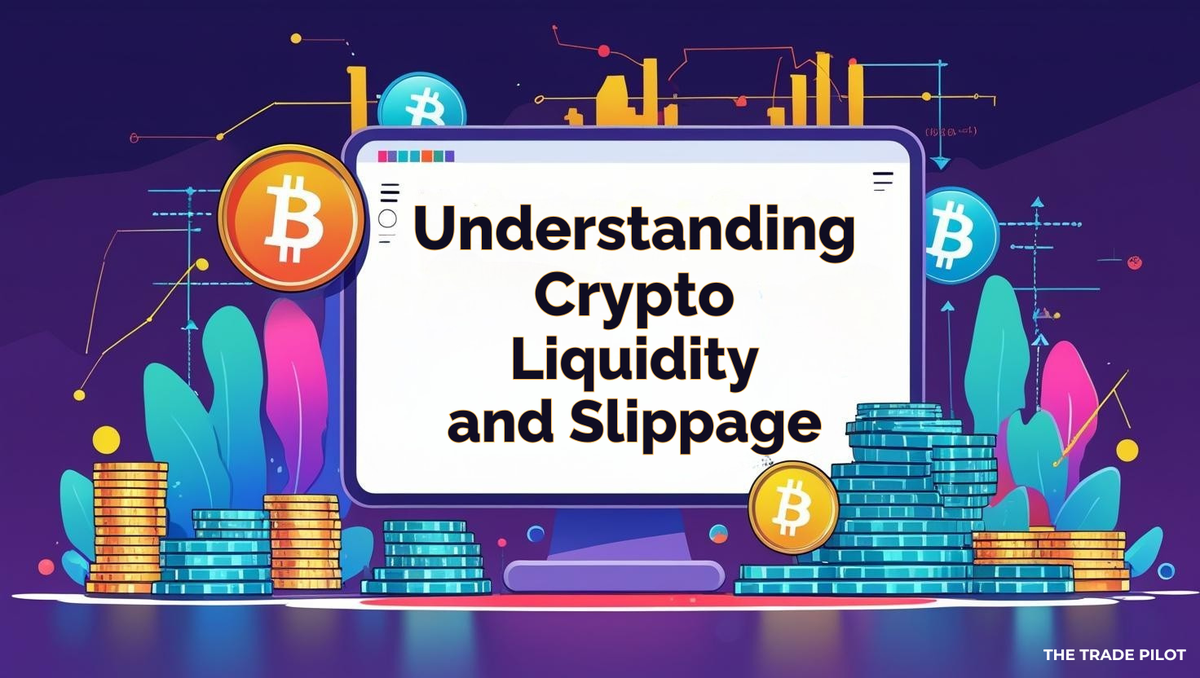Not sure what liquidity or slippage mean in crypto trading? Learn how these two concepts can affect your trades, especially as a beginner.
Liquidity and slippage may sound like technical terms, but they’re crucial to understand if you want to become a smarter crypto trader. Whether you’re making your first $10 trade or planning to scale up, knowing how these factors affect your trade execution can help you avoid hidden losses and improve your results.
What Is Liquidity?
Liquidity refers to how easily an asset can be bought or sold without causing a big change in its price. If a market has lots of buyers and sellers and a high trading volume, it’s considered "liquid."
High Liquidity Markets:
- Trades execute quickly
- Small difference between buy (bid) and sell (ask) prices
- Prices are more stable
Low Liquidity Markets:
- Orders take longer to fill
- Big price gaps between buy and sell
- Higher risk of sudden price jumps or drops
Example: Bitcoin (BTC) and Ethereum (ETH) are highly liquid because they’re traded on nearly every exchange with a high daily volume. In contrast, a newly launched altcoin with low activity might have poor liquidity, making trading riskier.
What Is Slippage?
Slippage is the difference between the price you expect when placing a trade and the actual price at which it gets executed. It’s especially common in fast-moving or illiquid markets.
Types of Slippage:
- Positive Slippage: You get a better price than expected
- Negative Slippage: You get a worse price than expected
Example: You place a market buy order expecting to get ETH at $1,800, but your order is filled at $1,820 due to a price jump. That $20 difference is negative slippage.
Even small slippage on multiple trades can quietly eat into your profits over time, especially if you're actively trading.
How Liquidity and Slippage Are Connected
Low liquidity directly contributes to slippage. If there aren’t enough buy or sell orders near your desired price, the exchange must match your order with a less favorable one, resulting in slippage.
The larger your trade, the more likely you’ll face slippage in a market with low liquidity. This is why high-volume traders often stick to top-tier coins.
How to Avoid or Minimize Slippage
There are ways to protect yourself from unexpected execution prices:
- Use limit orders instead of market orders to control the exact price
- Trade during high-volume periods, like regular business hours in major markets
- Avoid trading right after big news, listings, or market crashes
- Stick to popular trading pairs with high liquidity (like BTC/USDT or ETH/USDC)
- Check the order book depth before placing large trades
The more you plan your trade, the better you can manage slippage and make cleaner entries and exits.
Why Liquidity and Slippage Matter for Beginners
When you're trading small amounts, you might think slippage doesn’t matter—but it does. Losing even 1–2% per trade to poor execution adds up over time.
By learning about liquidity and slippage early:
- You’ll pick safer, more liquid assets
- You’ll avoid trades that are too costly to execute
- You’ll understand why your order filled differently than expected
Good habits formed early will serve you well as you grow your portfolio.
Final Thoughts
Liquidity and slippage may not sound exciting, but they play a major role in your success as a trader. Knowing how to navigate these factors helps you avoid hidden costs and make smarter, more efficient trades.
Always check market conditions before you place a trade. With the right awareness and a little preparation, you'll trade more confidently and protect your capital along the way.

